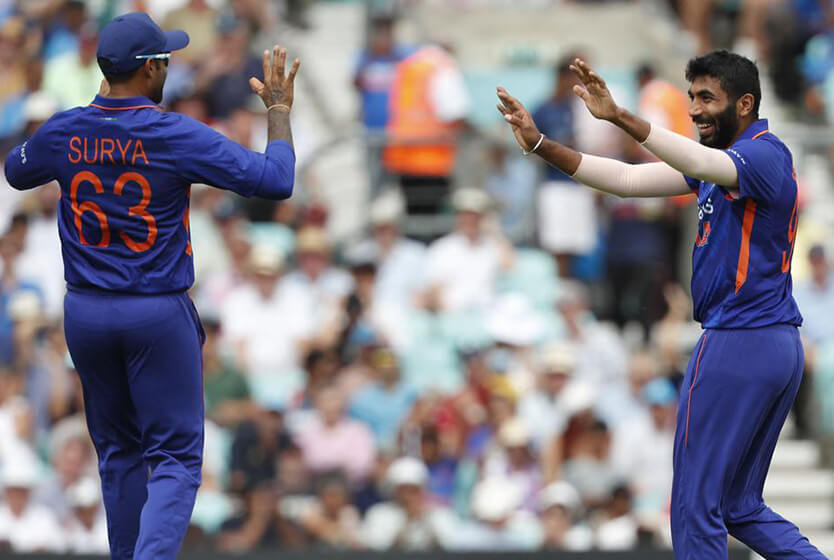
The Expectation Problem in Pakistan Cricket
Are Pakistan’s expectations too high from the “weak points” of their playing XIs?
Babar Azam looks nervous. It’s pretty clear he isn’t yet used to sitting down and answering questions from journalists, but a smile erupts on his face at the suggestion that Pakistan’s Test middle order isn’t performing. That part of the press conference would be clipped out and shared for a few chuckles on social media.
Everyone knows the journalist made a faux pas; it’s limited-overs (particularly T20s) where the middle order struggles while it does most of the heavy lifting in Tests. Of course, that is in line with the world order, but to fans, it always seems that Pakistan has the most acute crisis.
Babar would be vindicated when the middle order (#3-7) would score 75% of Pakistan’s runs in the Test match. The openers, meanwhile, contributed just 14% and remained an easy punching bag. The fact is that neither Abid nor Imran (his batting, anyway) inspire confidence. Abid was, once upon a time, decisive with his feet movement and confident in his drives, but no more.
Meanwhile, Imran seems destined to be a story you tell your kids. His slip catching has already reached mythical proportions. But, of course, we will add the caveat that he was “a pretty terrible batter,” who was eventually dropped because you don’t pick your openers on how they can catch. He will go back to domestic cricket for a period of time (say 3-4 years) and may come back a better player but will naturally not be given a proper shot because of his prior record of ineptitude.
You can already envision it: first game back, he scores a gritty forty-odd, the next three innings he falls early, and that’s the end of the series. Seven months later, when the next Test squad is needed, no one will notice that he is missing. He’ll go back to domestic cricket again, he will cross the dreaded 30 years of age, and that will be it. It won’t matter how many runs he scores after that; it’s done.
Pakistan’s opening partnership in New Zealand lasted for a total of 35 runs across four innings. Shan Masood would collect three ducks while Abid Ali hung around for a “Dentury” or “Cowan” before departing.
From Jan 2020 – Jan 2021
| Opener | Inns | Runs | Average | 100s | 50s |
| Shan Masood | 10 | 289 | 28.9 | 2 | 0 |
| Abid Ali | 10 | 215 | 21.5 | 0 | 1 |
| New Zealand | 1st Test | 2nd Test | ||
| Shan Masood | 10 (42) | 0 (8) | 0 (8) | 0 (25) |
| Abid Ali | 25 (104) | 0 (2) | 25 (53) | 26 (77) |
Shan Masood would be dropped, despite scoring away from home on most occasions bar the last one. Abid would bat in the South Africa series like a death row prisoner who has received a stay on his execution but knows it will be revoked at any moment.
Imran Butt is the sacrificial lamb, with the next destined to be a thirty-six-year-old with aging reflexes. Eventually, the selectors may realize their folly and bring back Shan, but he won’t be given a long rope. He may again average 35 (above average for an opener in this era) and then again have one bad series, ultimately be dropped for good.
One can’t help view this merry-go-round and relate it to the other problem Pakistan has created for itself – the number six position in limited-overs. Once again, the solution seems to be pushing someone there who doesn’t usually bat in such a position and hoping for the best. It has already done away with its Imran Butt equivalent – Danish Aziz. Meanwhile, the person best suited is much maligned for not performing to expectations.
Pakistan doesn’t want a Test opener; they want the best Test opener in the world. They don’t want a limited-overs number six; they want the best limited-overs number six in the world. But the long rope required to make them the best in the world is never given.
It is a sad predicament with no perfect solution. This is just the tip of the iceberg. One can never know how many players at lower levels were discarded too early because of expectations and assumptions. To think this is not a systemic issue is to be naïve. A cricket-crazy nation of 220 million people should not be reduced to looking elsewhere for their Test openers and limited-over number sixes than the ones batting at that position in domestic cricket, but yet here we are.
It’s time to come to terms with the fact that Test openers will fail more often than middle-order batsmen, lower middle-order limited-overs batsmen will fail more often than limited-overs openers, spinners will struggle on non-conducive wickets, and twenty-year-old fast bowlers will have bad days. That doesn’t make them terrible, and it doesn’t make them lesser than other players with easier jobs. You pick the best in the country, you back them, and hope they become the best in the world. At times, you don’t need all of them to become the best, sometimes average is enough if average is the best you can do.







Leave a Reply